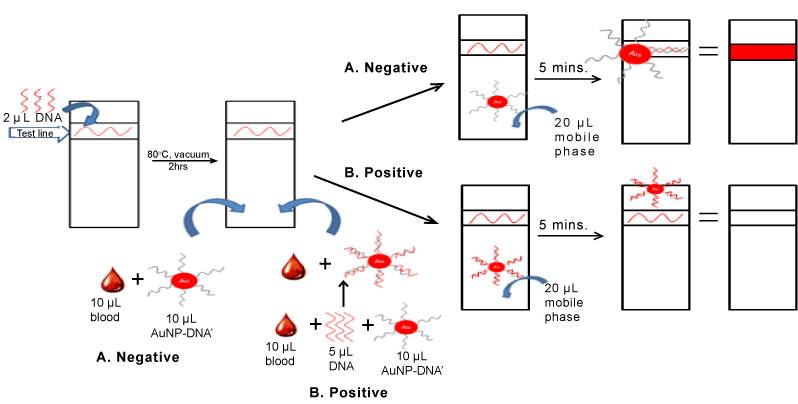
 |
| Figure 1: Schematics of the LFSB fabricated in the study. First, 2μL of a DNA sequence is dropped onto the membrane and the strip is vacuum dried at 80°C for two hours to immobilize the DNA on a region called the test line. Then, for a negative control, gold nanoparticles (AuNP) conjugated with DNA (sequence complementary to the strand immobilized to the test line) in a blood sample without a synthetic target DNA (sequence similar to the strand immobilized to the test strip) were added to the membrane. Upon the addition of an eluent buffer as the mobile phase, the AuNP-DNA bound with the previously immobilized DNA in the test line forms a red band. For a positive control, a second aliquot of AuNP-DNA was added to a blood sample with synthetic target DNA and this hybridized with AuNP-DNA. This time, upon the addition of the eluent buffer, there was no free conjugated DNA that can bind to the DNA in the test line, so no red band was formed. |